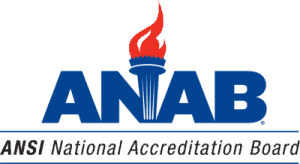Types of Conformity Assessment Activities

Activities that are used for conformity assessment include testing, calibration, inspection, audit, assurance, validation, verification, and certification. These conformity assessment activities can result in different statements of conformity such as supplier’s declaration of conformity or a calibration certificate, or in the form of a test report or product information sheet.
Objective of Conformity Assessment Activities
In order to evaluate if the specified requirements are fulfilled, Conformity Assessment Bodies perform conformity assessment activities. Conformity assessment activities are used to 1) demonstrate an object of conformity assessment and 2) demonstrate fulfillment of specified requirements. First, conformity assessment activities are used to demonstrate whether an object—which can be material, installation, process, system, person, data, design, material, claim, product, body or organization, or any combination thereof—is fulfilling specified requirements. Second, conformity assessment activities must demonstrate that an object has adhered to specified requirements, which can be stated in normative documents such as regulations, standards, and technical specifications. Requirements can include performance, safety, efficiency, effectiveness, reliability, durability, or environmental impacts.

What Is Testing?
Testing refers to the determination of one or more characteristics of an object of conformity assessment—namely materials, products, or processes—according to a validated method or procedure. The method or procedure controls variables within testing as a contribution to the accuracy or reliability of the results. The results of testing can be expressed in terms of specified units or objective comparison with agreed references. The output of testing may include comments (e.g., opinions and interpretations) about the test results and fulfilment of specified requirements.
Example: Food manufacturers must ensure the food they are producing is safe for consumption. ISO/IEC 17025 accredited testing laboratories, whether internal or external, analyze samples of food for contaminants, as well as nutritional content, so that consumers can have confidence is the food they are consuming.

What Is Inspection?
Inspection refers to an examination of an object of conformity assessment—namely product design, product, process, or installation—and determination of its conformity with detailed requirements or, on the basis of professional judgement, with general requirements. Examination can include direct or indirect observations, which can include measurements or the output of instruments. Inspection can concern all stages during the lifetime of these items, including the design stage. Such work normally requires the exercise of professional judgement in performing inspection, in particular when assessing conformity with general requirements.
Example: Fire rated door assemblies must be constructed near stairwells and elevator shafts in many public buildings, such as hotels. These doors are inspected by ISO/IEC 17020 accredited inspection bodies to assign a fire rating defined by the National Fire Protection Association (NFPA).

What Is Audit?
Audit refers to the process for obtaining relevant information about an object of conformity assessment and evaluating it objectively to determine the extent to which specified requirements are fulfilled. The specified requirements are defined prior to performing an audit so that the relevant information can be obtained. Examples of objects for an audit are management systems, processes, products, and services.
Example: ISO/IEC 17021-1 accredited management system certification bodies audit organizations to document conformance to specified requirements, such as ISO 9001 for quality management systems. A certificate is issued to the organization by the certification body.

What Is Validation and Verification?
Validation refers to the confirmation of plausibility for a specific intended use or application through the provision of objective evidence that specified requirementshave been fulfilled. Validation can be applied to claims to confirm the information declared with the claim regarding an intended future use.
Verification refers to the confirmation of truthfulness through the provision of objective evidence that specified requirementshave been fulfilled. Verification can be applied to claims to confirm the information declared with the claim regarding events that have already occurred or results that have already been obtained.
Example: Most validation and verification conformity assessment activities relate to claims related to greenhouse gas emissions, environmental labeling, and eco-footprints. ISO/IEC 17029 accredited validation and verification bodies makes declarations related to organizational policies and operations driven by regulations.

What Is Certification?
Certification refers to third-party attestation related to an object of conformity assessment with the exception of accreditation. In other words, certification is the issuance of a conformance statement by a third party (usually a certification body) that a product, process, system, or person has demonstrated the fulfillment of specified requirements.
Example: Federal law requires manufacturers and importers to test many consumer products for compliance with consumer product safety requirements. Based on passing test results, the manufacturer or importer must certify the consumer product as compliant with the applicable consumer product safety requirements in a written or electronic certificate. This is an example of product certification.

Why Are Conformity Assessment Activities Important?
For a product to enter a market, it typically needs to be able to demonstrate to the buyer or regulator that it is safe and performs as promised in terms of energy efficiency, reliability, sustainability, and many other criteria. The objective of conformity assessment activities is to provide the consumer or end user with a measure of confidence in the products and services being purchased. Conformity assessment attests to the characteristics of the products, services, persons, or organizations that are subject to the conformity assessment activities being performed.
ANAB Accreditation of Conformity Assessment Bodies
ANAB accreditation of Conformity Assessment Bodies (CABs) conveys formal demonstration to carry out specific conformity assessment activities, such as certification, inspection, verification/validation, assessment, testing, and calibration, as defined on a scope of accreditation. A system to accredit CABs aim to provide consistent application of conformity assessment to international consensus-based standards and conformity assessment schemes, in order to benefit public health, safety, environment, and welfare and support regulators and end uses.







Alexandra,
Your blog on conformity assessment is one of the finest and most comprehensive ever produced.
It a perfect for end-users who seek to understand the conformity assessment framework, the objective of conformity assessment and the requirements.
Ross Quan
Senior Manager of Accreditation
ANAB